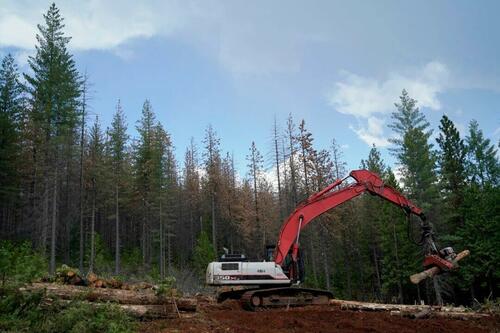
Goldman Sachs Exposes China’s Economic Strategy Against Rising Tariffs
Tháng 4 7, 2025
Global Financial Markets in Turmoil: U.S.-China Trade Tensions Escalate
Tháng 4 7, 2025USDA’s New Logging Initiatives: A Streamlined Approach Amid Wildfire Concerns
The United States Department of Agriculture (USDA) is increasingly focusing on expanding logging operations within the national forests, citing escalating concerns related to wildfire risks and the threats posed by invasive insect species. This strategic move has ignited a vibrant debate, with advocates arguing it offers a proactive solution to protect forests, while critics warn about the potential negative impacts on environmental integrity.
Wildfire Risk Mitigation Through Logging Expansion
The USDA, alongside the Trump administration, proposes that increased logging in national forests will lessen wildfire risks by reducing biomass accumulation. The rationale here is straightforward: by removing excess trees and underbrush, the potential fuel for wildfires is diminished, thereby lowering the likelihood of devastating blazes. However, this perspective faces robust opposition from numerous conservation groups, who contend that methods such as prescribed burns are far more effective in the long-term management of wildfire risks.
These groups emphasize that controlled burns not only reduce fuel loads but also promote ecosystem health by encouraging the growth of native plant species. Such methods can mimic the natural processes that shaped these forests prior to extensive logging. This disagreement amplifies as the Trump administration pushes forward its agenda through recent executive orders aimed at bolstering American timber production. These orders align with the principles outlined in the Fix Our Forests Act, aiming to expedite logging operations by exempting them from certain environmental reviews, an approach that raises substantial environmental concerns.
Invasive Insects: A Silent Threat to Forest Ecosystems
While the recent directives do not provide extensive details about invasive insect management strategies, it’s crucial to understand that these threats often demand adaptive forest management practices. Typically, forest management efforts may involve selective logging to address the impacts of invasive species, mitigating their destructive influence on native tree populations and overall biodiversity.
The uptick in mentions of invasive species highlights an urgent need for comprehensive strategies that do not merely focus on logging but also incorporate ecological balance. By fostering natural controls and enabling tree resilience through varied age structures within forest ecosystems, these strategies can help combat infestations more sustainably.
Controversy Surrounding Logging Policies
The policies advocating for expanded logging operations have not been without controversy. Many conservationists view these initiatives as a way to favor the timber industry while undermining genuine environmental protections. Critics highlight that such policies may lead to extensive damage to public forests, compromising both their ecological integrity and public enjoyment. The ongoing debate emphasizes a fundamental clash between economic motives and environmental stewardship.
Despite the contentious nature of these policies, initiatives like the Fix Our Forests Act have managed to attract bipartisan support. Nonetheless, a significant segment of environmental organizations remains opposed, suggesting that the path to effective wildfire prevention lies not in logging but in diversified approaches that prioritize ecological health and resilience against climate-induced stresses.
As the USDA moves forward with its logging agenda, it remains imperative for stakeholders to engage in meaningful dialogue. By balancing economic needs with environmental considerations, it may be possible to forge a path that protects both our forests and the communities that rely on them.

